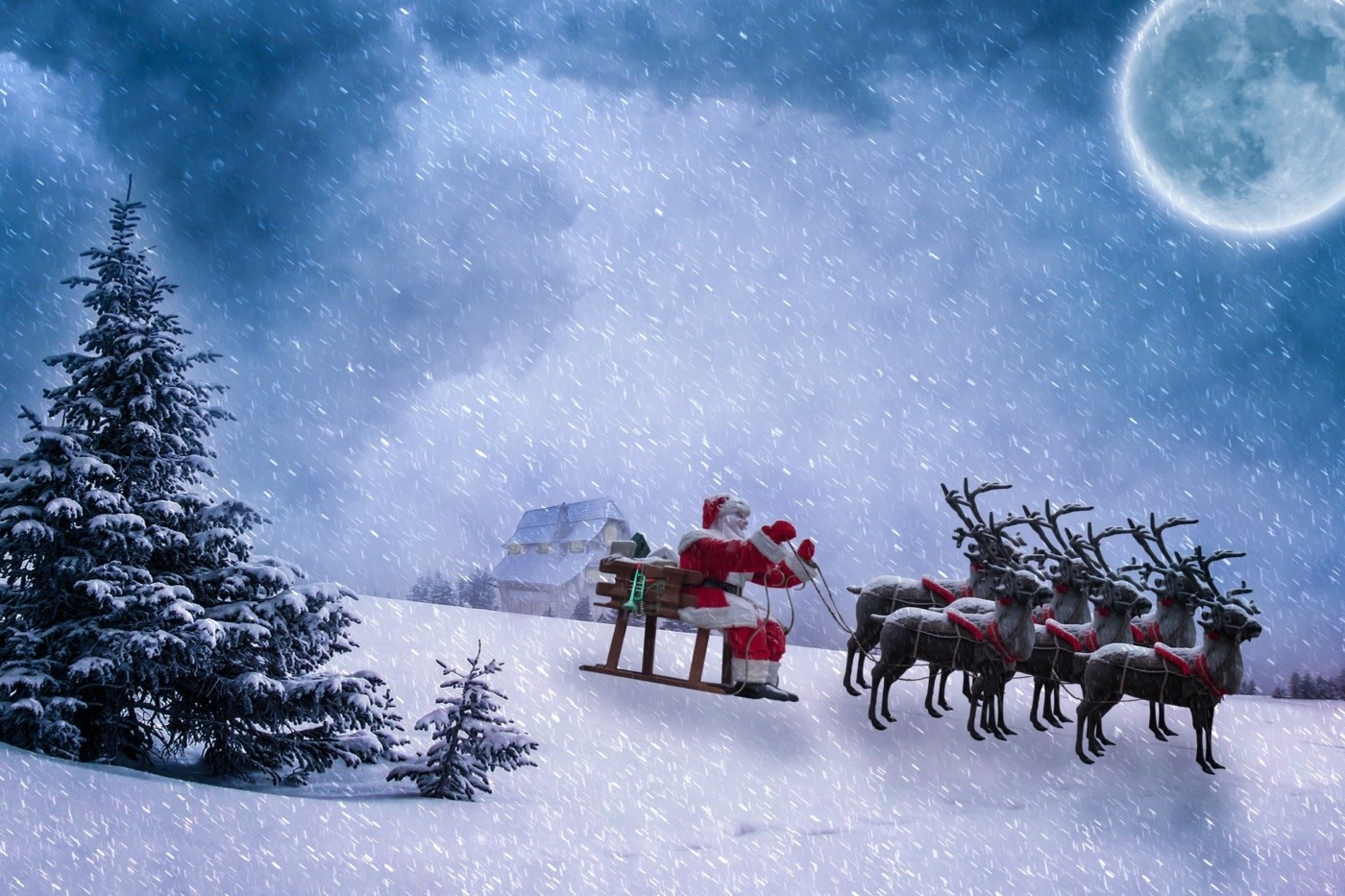The science behind Santa’s mission
Every year, Santa delivers presents to all the good children on Earth. This is an indisputable fact. But how does Santa manage this incredible feat? Join me as I crunch the numbers to find out!
Let’s assume Santa delivers presents by throwing them down chimneys with pin-point accuracy. We can work out the area Santa can cover if we know three things: how high Santa flies, how fast he goes and how far he can throw. I like to believe that all people have a spark of goodness, so will be using whatever numbers allow Santa to deliver to the most people.
Santa’s altitude and speed are easy to determine. Santa is never shown using an oxygen mask, so his sleigh must fly low enough for him to breathe. The air gets thinner the higher you go, with less oxygen. Mountaineers have found the highest a person can survive above sea level is about eight kilometers – we take this to be Santa’s flight altitude. As he flies, Santa yells ‘Ho! Ho! Ho!’, presumably to entertain himself. This implies he can hear his own laughter and means Santa must be flying at slightly less than the speed of sound, let’s say about 1,200km/h.
But how do we find how far Santa can throw? I asked my Grandad, the closest person to Santa I know, to throw a 300g box representing the average present as far as he could. Grandad achieved an impressive average of 4.2m, commenting ‘You’re off your head, what a daft way to spend a morning.’
Now we know everything we need to calculate the area Santa can cover. After a cheeky bit of maths, Santa’s delivery area comes out to be 370 square kilometres every hour. If he flies for the whole 24 hours available to him, he can cover almost 9,000 square kilometres. Considering the surface area of the Earth is 510 million square kilometres, that’s almost nothing!
There is no way Santa can visit every child on Christmas Eve – he needs to prioritise. There are two main ways Santa can maximise the number of children he visits.
There is no way Santa can visit every child on Christmas Eve – he needs to prioritise.
Firstly, Santa only flies at night, so he needs to plan his route to squeeze out every possible second of darkness. A location’s hours of darkness are dependent on its latitude (how far north or south of the equator it is). In the far north, it is dark nearly all day so Santa can take his time with deliveries here. In the south, however, Santa needs to hit each land mass during the very short nights. Near the south pole, the sun doesn’t set at all in December. This suggests no children living in Antarctica are good, because the sun never sets there. Thankfully, there are very few children doing polar research.
The other thing Santa needs to consider is the efficiency of his journey. He needs to fly over as many children as possible to deliver the most presents. This means the population density of the area he flies over matters. For example, Sweden has a population density of 23 people per square kilometre- if all these people are children, Santa could deliver presents to 8,500 of them every hour. In comparison, Singapore has 8,000 people per square kilometre. Santa can deliver almost 3 million presents an hour there!
But does this mean kids living in rural parts of the southern hemisphere get left out? Surely not! Santa is only prejudiced against children who shout, cry or pout – all the others get a present.
There is only one logical conclusion to be drawn from this. Just as Santa needs help from the elves to monitor the behaviour of every child on Earth, so he must need help to deliver the presents. After a whole year of observing a child, popping round to deliver a gift is hardly any effort at all. No one person can do the job of Santa. Everyone needs to work together, and isn’t that the spirit of Christmas?

Comments